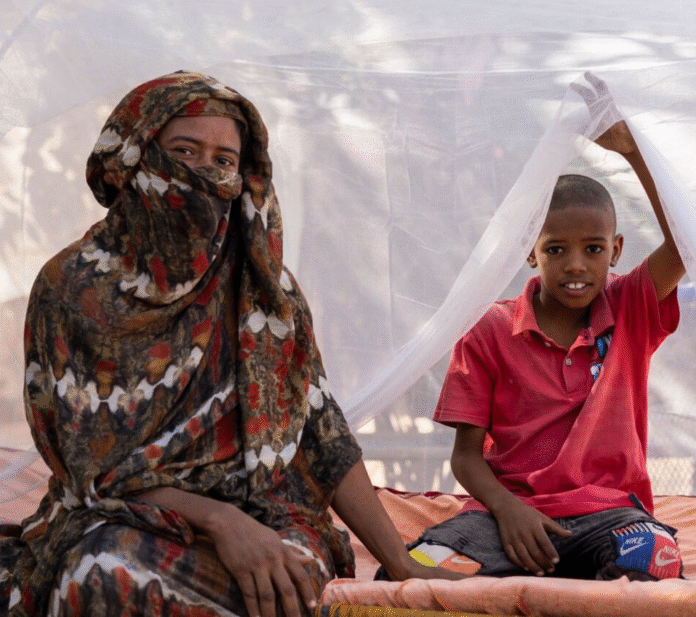Illustrative Image: Urban Malaria in Sub-Saharan Africa: Prevalence, Risk Factors, and Control Strategies
Image Source & Credit: UNICEF
Ownership and Usage Policy
A recent study by Merga et al. (2025) titled “Urban malaria in sub-Saharan Africa: a scoping review of epidemiologic studies” published in Malaria Journal by Springer Nature reveals that urban malaria is a significant and complex public health challenge in SSA.
“
Urban malaria in sub-Saharan Africa is widespread, context-specific, and driven by diverse factors, requiring localized, multi-sectoral interventions for control.
– Merga et al. 2025
The study provides a comprehensive investigation into how malaria behaves and spreads in urban environments across sub-Saharan Africa (SSA). Its main objectives are to map the epidemiology of urban malaria, identify research gaps, and guide effective strategies for control and elimination. The review highlights how environmental, demographic, and socioeconomic factors shape malaria transmission in urban areas, offering new insights into a traditionally rural-associated disease. The authors reveal that the prevalence of urban malaria in SSA ranges widely from 0.06% to 55%, though most studies report between 10–30%. The dominant malaria parasites identified are Plasmodium falciparum and Plasmodium vivax. Several risk factors contribute to transmission, including socioeconomic status, travel history, prior malaria infections, proximity to water sources, vegetation around homes, temperature and humidity levels, livestock ownership, and the use (or lack) of insecticide-treated nets (ITNs). Rapid and unplanned urbanization further exacerbates the problem by creating breeding grounds for mosquitoes, with the spread of Anopheles stephensi—a mosquito species highly adapted to urban environments—posing a growing threat. Interestingly, in some cases, malaria prevalence in urban areas exceeds that of rural regions, challenging traditional assumptions about malaria’s geographic distribution.
How the Study was Conducted
The study employed a rigorous and structured methodology to map existing evidence and highlight research gaps. Guided by the Joanna Briggs Institute (JBI) scoping review framework and the enhanced model by Levac, Colquhoun, and O’Brien, the review synthesized both qualitative and quantitative findings to address broad research questions on urban malaria. A three-step search strategy was applied across major databases including PubMed, CINAHL, ScienceDirect, Google Scholar, and the Cochrane Library. The process began with an initial search, followed by refinement of keywords from titles, abstracts, and index terms, and concluded with an expanded search across all databases as well as citation screening. Only studies published in English from 2014 onward, covering both peer-reviewed and grey literature, were considered.
- Eligibility was determined using the PCC framework:
- Population: Urban residents of all ages and sexes
- Concept: Urban malaria (prevalence, incidence, risk factors)
- Context: Sub-Saharan Africa
Included study types ranged from observational and analytical designs to case reports, case series, cross-sectional studies, and literature reviews that met the criteria. In total, 2,437 records were identified, with an additional 24 studies from citation checks. After removing duplicates and screening abstracts and titles, 32 full-text articles were selected. Data extraction was performed independently by three reviewers using a structured JBI-based form.
What the Authors Found
The authors found that urban malaria in sub-Saharan Africa is widespread, complex, and highly context-dependent, driven by a combination of sociodemographic, socioeconomic, environmental, and mobility-related factors—challenging the traditional view that malaria is primarily a rural disease and requiring localized, multi-sectoral interventions for effective control.
Why is this important
Urbanization Fuels New Risks
By 2050, nearly 70% of SSA’s population will live in cities, where unplanned growth creates mosquito breeding grounds and intensifies malaria risk.
Emerging Vector Threats
The rise of Anopheles stephensi—a city-adapted, insecticide-resistant mosquito—poses a serious danger of large-scale urban malaria outbreaks.
Rural-Focused Policies Fall Short
Traditional malaria strategies target rural areas, but this study shows urban malaria can be equally severe, requiring localized, data-driven interventions.
Holistic, Adaptive Solutions Are Needed
Because risk factors differ across cities, tailored approaches addressing socioeconomic, environmental, and behavioral drivers are vital to achieve global malaria elimination goals.
What the Authors Recommended
- The authors emphasise integrating health, housing, sanitation, and socioeconomic policies to reduce malaria risk through environmental management, better diagnostics, improved care, and poverty reduction.
- The study advocates design interventions tailored to local realities by mapping high-risk urban zones, tracking mobility, and adapting to vector behavior in each city as well as invest in standardized diagnostics, robust reporting, and geospatial tools to generate accurate, timely data for guiding urban malaria control.
- Furthermore, prioritize surveillance and containment of Anopheles stephensi, an insecticide-resistant mosquito that thrives in urban environments and threatens malaria elimination progress.
- In addition, ensure urban malaria control is embedded in national health agendas, with funding linked to achieving the SDGs and WHO elimination targets.
In conclusion, addressing urban malaria in sub-Saharan Africa demands innovative, context-specific, and multi-sectoral strategies that integrate health, infrastructure, and socioeconomic policies to effectively curb transmission, protect vulnerable populations, and advance global malaria elimination goals.
















 The African Research (AR) Index is a comprehensive scholarly directory and database focused explicitly on journal publishers that publish and disseminate African research.
The African Research (AR) Index is a comprehensive scholarly directory and database focused explicitly on journal publishers that publish and disseminate African research.

